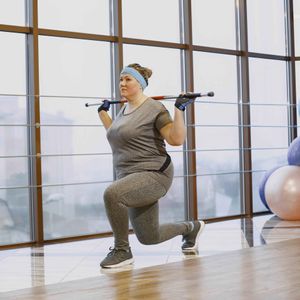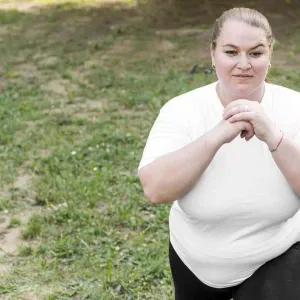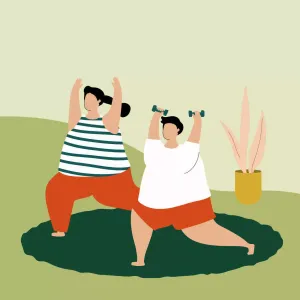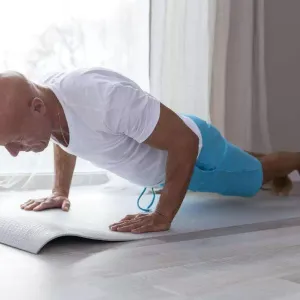

Our Review Process
Our articles undergo extensive medical review by board-certified practitioners to confirm that all factual inferences with respect to medical conditions, symptoms, treatments, and protocols are legitimate, canonical, and adhere to current guidelines and the latest discoveries. Read more.
Our Editorial Team
Shifa Fatima, MSc.
Author
Dr. Apoorva T, MHM.
MEDICAL ADVISOR
Fixing Knee Pain during Workouts : How To Fix
For anyone who might have ever faced some sort of aches & pains in and around the knee joint, that as been persistently bothering them for years and thus forcing them to push through pain, this article will help understand how the knee joint functions in tandem with structures around it and how can one potentially get rid of it.
Table of Contents
What causes Knee Pain?
Let’s first look into the most common reasons we may develop Knee Pain
- Direct or traumatic pain due to an injury (Torn or injured ACL)
- Non contact injury (Pain when you go to the bottom of the squat or when you walk)
In this blog, we will focus on the second reason, which is more of a preventive approach to take care of the health and integrity of the knee joint.
Whenever you feel that niggle, ache, pain or discomfort in the knee joint while performing basic functional movements, your first reaction would be to look at the joint itself or the muscles right on top of them (quadricep in this case) as the origin of pain. Sometimes trainers/therapists look at foam rolling the quadricep as a potential solution doubting stiff muscles as a reason, but in most cases, that may not even be the problem. What we need to do however, is start connecting the dots and look at it in a more holistic way as stated below.
Joint by Joint Concept
Gray Cook has explained in his book ‘Movement’ talks about this concept saying- Human movement is complex, it needs multiple muscles & body parts to work together in synchronization. If a muscle doesn’t fire at the right time in a particular movement it will lead to inefficiencies leading to dysfunction over a period of time. One should look at the the body as a series of joints, stacked on top of the other, like this-
- Foot – Requires stability
- Ankle – Requires more mobility
- Knee – Requires more stability
- Hip – Requires mobility and stability
A dysfunction in any of the parameters mentioned above, can potentially lead to unstable knees and pain thereafter. If ignored, can lead to an injury.
The Knee Joint
Any pain in the knee could possibly be triggered due to instability in the joint. But how do you identify if your knees are unstable? it’s pretty simple, look at the image below. The one on the top shows knees tracking in perfect alignment with the toes but the image below shows the knees caving in and that’s the most prominent sign of instability in the knees.

Knees caving in while squatting is just one example, a little bit of knee collapse or minor wobble can happen in movements like jumping & climbing up the stairs. If not corrected well in time, this can lead to an injury in the future. Basically, if the knee is not aligned to the body in functional movements, it will have to handle a lot of uneven forces placed on the joint and in time it starts to wear out.
How to Fix Knee Pain due to Collapse Phenomenon
1. Work on Ankle and/or Hip Mobility more often
Your knee joint will definitely start to lose stability, if the body has stiffness in the joint exactly above or below. When there is stiffness in either of these joints, the knees will start to over compensate in movements and start moving out of alignment. There are very simple tests that can be done at home to assess Ankle & Hip Mobility. Either way, mobilizing the hip and ankle on a daily basis is a good idea.
2. Build more Stability in the Knee
Knee wobble or collapse is mostly not related to quadricep or hamstring stiffness, it’s generally controlled by the lateral hip muscle called the gluteal muscles (commonly known as the glutes). And more than strengthening them, for this purpose, we need to build more stability in those muscles, which means we need to train them to fire at the right time in any movement using simple methods like-
a) Reactive Neuromuscular Training (RNT) : Using Bands to force muscle engagement
b) Unilateral Training : Training on a Single Leg (eg: Split Squat, Step ups, etc.)
Bottom Line
Knee pain can often be caused by something that’s not at the knee (not the quads or hamstrings), it’s potentially a problem all the way up at the hip or down at the ankle which makes the knee go out of alignment. If we ensure enough mobility in the Ankle and Hip joint, enough stability in the foot and the knee we can cut the chances of bad knees at a later point significantly.
References
- https://www.mayoclinic.org/diseases-conditions/knee-pain/symptoms-causes/syc-20350849
Disclaimer
This website's content is provided only for educational reasons and is not meant to be a replacement for professional medical advice. Due to individual differences, the reader should contact their physician to decide whether the material is applicable to their case.







